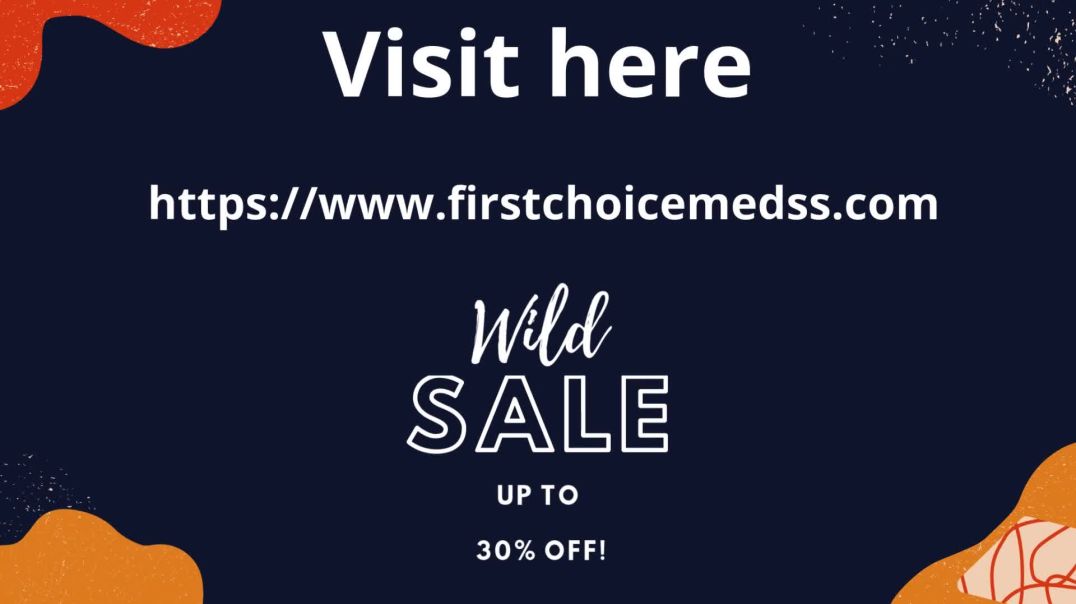Top videos
Transcript of the videos for you:
What we will be talking about to you today is post massive weight loss body contouring procedures. If you are someone who has lost a lot of weight or if you know someone who has lost a lot of weight, then this video is for you because I will be discussing in-depth about post massive weight loss body contouring.
Keep watching this video because this might benefit you and may change your life forever.
I am Dr. Rajat Gupta, a board-certified plastic surgeon working in Delhi, with an experience of over 2000 body contouring procedures.
So, let’s talk about what is massive weight loss.
Now, any individual can lose a lot of weight. But massive weight loss means the loss of at least 10kg in 3 months time. So, lot of individuals lose a lot of weight either due to exercise, dieting or they undergo some procedures like bariatric surgery, in which there are different options of sleeve gastrectomy, roux en y bypass – all as simple as a balloon insertion into the stomach.
After all these interventions, a person loses a lot of weight and they reduce their subcutaneous fat a lot. Now, once they lose this weight and the subcutaneous fat what happens is that their skin starts sagging or the skin gets loose.
You may notice that they lose fat from their face and neck and the face and neck skin start loosening up. Or, majorly, they lose a lot of fat from their abdomen and their abdominal skin gets loose and it doesn’t look nice if they remove their clothes. There is a huge amount of skin which is sagging. At the same time,
they may have some loose skin in their thigh area which does not look nice.
In females, once they lose a lot of fat, they may also get breast sagging. Their breasts may sag. Which also doesn’t look nice. Depending upon what areas an individual has got sagging and in, we plan the correction for those areas. Basically, what they need is removal of excess skin.
Now, whether this excess skin is in their neck, in their chest, in their abdomen, in their arms or thighs, the treatment is customized depending upon what an individual’s needs or requirements are. So, suppose someone has a lot of excess skin in their abdomen. What it needs is the removal of excess skin from the lower abdomen or a procedure known as tummy tuck or abdominoplasty. If a person has excess skin in their thighs or arms, then they need a reduction in their excess skin, in those areas and the procedure is called a thigh lift or an arm lift. For face and neck sagging, a person may undergo a procedure
called face or neck lift. And for the sagging of breasts, they need a procedure called breast lift or mastopexy.
Now, all these procedures are actually customized and tailored for each individual. But a person who has lost a large amount of weight and has sagging skin, they would eventually need this because sagging skin is
not only an aesthetic concern but that area is also very difficult to clean. The sweat gets accumulated, they may have some fungal infections there, and it doesn’t look nice altogether. I’ve seen such individuals, when they remove their clothes, it’s not only that they don’t look nice, they also lose a lot of their confidence.
They display inhibitions even though they have lost such a large amount of weight and they look nice with clothes on. They would be inhibited by removing their clothes and going swimming or for a beach holiday.
So, understand that the ramifications of this procedure are not only for aesthetic concerns but also for the self-confidence of that person.
These procedures are reasonably safe procedures if done by a good plastic surgeon at a good center. Now, you need to choose your plastic surgeon keeping in mind a person who has experience with post massive weight loss contouring because these are some things which are very different to contour, the skin excess is in all dimensions, and therefore your plastic surgeon has to be smart enough and artistic enough that they understand how to remove the excess skin while giving you minimal scars and, at the same time,
enhancing the shape of your body.
I’ve tried to answer the indications of body contouring after post massive weight loss procedures. If you have any more questions regarding these procedures, please write into us and I will be there to help you. Thank you.
#plasticsurgery #bodycontouring #drrajatgupta
Maxgun 100 is a male enhancement pill effective for improving the problem of sexual disorder in men. Sildenafil USP 100mg serves as its active component that helps to treat Erectile Dysfunction in men.
Chat on WhatsApp with +91 92163-25377
Buy Now : https://www.rsmenterprises.in/....product/viewdetail/m
#rsmenterprises #health #healthcare #maleenhancepills #maxgun100mg #sildenafil100mg #edmedicine #genericviagra #maleviagra
Aurogra 100mg is a medication primarily used to treat erectile dysfunction (ED) in men. It contains sildenafil citrate, the same active ingredient as Viagra, and works by increasing blood flow to the penis, helping men achieve and maintain an erection when sexually stimulated.
Chat on WhatsApp with +91 92163-25377
Buy Now : https://www.rsmenterprises.in/....product/viewdetail/a
#rsmenterprises #health #healthcare #aurogra100mg #sildenafil100mg #menshealth #genericviagra #maleviagra
Bluemen 100 (Sildenafil 100mg) Tablets comes with luminous benefits to help enhance erectile functioning in men. It comes with an active component of Sildenafil 100mg.
Buy Now : https://www.rsmenterprises.in/....product/viewdetail/b
#rsmenterprises #health #healthcare # Bluemen100mg #sildenafil100mg #genericviagra #maleviagra #edmedicine
Sildalist Strong 140mg is one of the well-known medicines used to treat male erectile dysfunction. It contains two active substances: sildenafil and tadalafil. Both of them act together to enhance the supply of blood to the male genital area, which can result in a strong and longer erection. You can buy Sildalist Strong 140 mg online. Following are some advantages: Among its most important advantages, it is extremely effective, particularly for those patients who have not experienced a satisfactory result with lesser dosages or with other medications taken for ED. Another significant reason, the unique combination of sildenafil and tadalafil used in Sildalist Strong 140 mg can prolong the effect duration and also provides the patient with the ability to more accurately fine-tune his response to such product treatment. Another significant benefit of this product is that it is convenient. It comes in the form of a tablet, and thus it can be consumed discreetly without opting for injections or any invasive methods. This feature is beneficial to the men who are sensitive towards other options available for treatment and are shy about their ED issue. Sildalist Strong 140 mg is, in general, of much importance to the men afflicted with ED.Buy Sildalist Strong 140mg online at our web store https://www.firstchoicemedss.c....om/sildalist-strong-
Extra Super P Force 200mg is a top-class product offering a lot of advantages to those looking for high-performance and sensual satisfaction life. With precise and cautious technology formulations, this product combines two effective ingredients of sildenafil citrate and dapoxetine to be a strong and dependable solution. Sildenafil citrate facilitates improved blood supply to the male genital organ, which enables longer and harder erections, thereby making the experience of intimate moments more enjoyable and aside from this dapoxetine aids a man in getting control over ejaculation so that he can prolong his sensual time and enhance the pleasure for himself as well as his partner. Notably, Extra Super P Force 200 mg is quick-acting in its composition, which brings its effects after only 30 minutes of consumption. Consequently, there will be an instant reaction without any unnecessary expectation.Buy Extra Super P Force 200mg online at our web store https://www.firstchoicemedss.c....om/extra-super-p-for
Orlistat Capsules 120mg are used in the management of obesity including weight loss and weight maintenance when used with a reduced-calorie diet. Today Order Now!!
Buy Now : https://tinyurl.com/Buy-Orlistat-Capsule
#rsmenterprises #health #healthcare #orlistatcapsules #orlistat120mg #euslim120mg #weightlosscapsule
Kamagra Oral Jelly is a prescription medication containing sildenafil citrate used to treat erectile dysfunction in men. Buy Kamagra Oral Jelly, a quick-acting, easy-to-use, and highly successful treatment.
Buy Now : https://tinyurl.com/purchase-now-kamagraoraljelly
#rsmenterprises #health #healthcare #menshealth #kamagraoraljelly #sildenafiloraljelly #genericviagraoraljelly
Bimat 0.03% is a revolutionary eye drop that successfully controls glaucoma and ocular hypertension and stimulates eyelash growth. Designed to lower intraocular pressure, Bimat lowers intraocular pressure by enhancing the drainage of fluid out of the eye to help save your vision and maintain eye health. Used regularly, you can experience significant improvements and live free of concern about high eye pressure.You can buy BIMAT 0.03% bottle online cheap on trusted sources. But wait, there's more! Bimat 0.03% is also famous for causing fuller, darker, and longer eyelashes. The active ingredient excites the hair follicles, thus promoting the growth of new lashes and totally transforming your looks without any trouble. Most of the customers have noticed significant improvements, and Bimat is therefore a must-have in everyone's beauty arsenal. With its ease of use and twofold benefit, Bimat 0.03% is the best choice for therapeutic as well as cosmetic effects. Consult your eye care professional how Bimat can provide you with healthier eyes and beautiful lashes.Buy bimat 0.03% online at our web store https://www.firstchoicemedss.c....om/bimat-0-03-bimato
Tadaga 10mg is a product employed for the treatment of male erectile dysfunction. A failure to achieve or maintain an erection of adequate rigidity for sensual activity constitutes ED, a fairly prevalent condition with the senses. Tadalafil, a PDE5 inhibitor, is the active ingredient of this product. This product is employed in men for the purpose of erection by enhanced blood supply to the genital organ and relaxation of the smooth muscle of the vessels within the genitalia. It should be taken orally, preferably half an hour prior to engaging in sensual activities. Be cautious that this drug can only provide an erection with the assistance of sensual stimulation. It's commonly referred to as the "weekend pill" because it lasts a maximum of 36 hours for the effect of the product.Now, the majority of people can handle this but just like any other medication, there will be a likelihood of experiencing side effects. Headache, dyspepsia, back aches, and muscle aches are some common side effects. These side effects will normally only last for a few hours. Severe side effects can be particularly hearing or vision loss, although uncommon. If you have any of these reactions, you ought to notify your doctor immediately. You should visit your health care provider so that he or she can check whether this is a safe and effective treatment for you. Conclusion:This product effectively treats ED in male patients.Buy Tadaga 10mg online at our web store https://www.firstchoicemedss.com/tadaga-10mg.html
Many women who consider breast implants worry about their safety, strength, and overall quality. These are valid concerns, and in this video, we want to clear those doubts with real, simple explanations and proof.
We use only the highest-quality breast implants, manufactured in Brazil, Paris, or the UK. These implants are trusted worldwide and come with a 15-year international warranty. That means if there’s ever an issue, the manufacturer will replace the implant free of cost, no matter where you are. We do not use cheap or unreliable materials, only top brands that meet the strictest safety standards.
Even after several tests, the implant holds its shape and remains undamaged. It bounces back to its original form, which proves how durable and reliable it is. This is not just talk; you’ll see the proof for yourself in this video.
If you’ve been feeling unsure or scared about getting breast implants, we’re here to help. and guide you with honest, science-backed advice and full transparency.
Watch the video, and feel free to reach out with any questions.
Related Blog
1- How much do breast implants cost in India? https://drrajatgupta.com/how-m....uch-do-breast-implan
_____________________________________
About Dr Rajat Gupta and RG Aesthetics
At RG Aesthetics, India’s best plastic surgeon, Dr Rajat Gupta is at your service! With 15 years of experience, brand certification, and international recognition, Dr Gupta is the solution to all your contouring needs.
His expertise in liposuction techniques combined with the state-of-the-art technology available at RG Aesthetics ensures we continue providing the most reliable services with incredible, instantaneous results!
Our equipment allows for every kind of liposuction there is – especially the minimally invasive kinds. Dr Gupta reflects RG Aesthetics’ belief of the patient’s comfort always being paramount. Procedures at RG Aesthetics, under Dr Rajat Gupta, minimize trauma and speed up recovery time for the best results!
.
Schedule a Consultation:
☎ Call: +91-9090696951 / 9560156136
✉️ contact@drrajatgupta.com
⛓️💥 Visit: https://www.drrajatgupta.com
✅https://www.instagram.com/rajatguptadr
✅https://www.facebook.com/drrajatgupta/
✅https://www.linkedin.com/in/rajat-gupta-9a6b23119/
#breastimplants #breastimplantsafety #areimplantssafe #breastsurgeryindia #implantdurability
Azee 250mg is the finest medication for bacteria-ridden ailments. Very easy to use, Azee 250mg, antibiotics have proven track records of producing results unlike any other. Whether it is a respiratory tract or skin infection or any other bacterial condition, Azee 250mg provides you quick relief and put you back on your feet. This product can claim to have the widest spectrum in the array of bacterial strains in handling just about anything there is. It's active ingredient Azithromycin makes it one of the most effective medications available in the market for bacterial related concerns. What makes Azee 250 mg different from the others, however, is the easy dosing regimen. This makes it an extremely convenient product to include in your routine: take only one tablet a day. There is every tablet with a best dosage that would be required for the infection to be overcome. Also, Azee 250mg is well tolerated and can be administered to a very broad population-from adults to children. Well-tolerated formulation guarantees negligible side effects, thus being able to go about one's normal daily activities without disturbances.Buy Azee 250mg online at our web store https://www.firstchoicemedss.com/azee-250-mg.html
Gynecomastia is classified into different grades in India, depending on the size and type of tissue. In Grade 2 cases, the gland can feel either hard like a stone or soft like fat. It usually sits in the center of the chest. Many patients experience a mix of fat and gland tissue, making surgical correction necessary.
Visit- https://www.divinecosmeticsurg....ery.com/gynecomastia
#gynecomastiasurgery #gynecomastiabeforeandafter #gyno #dramitgupta #divinecosmeticsurgery
Abhirise 20mg is a great effective solution prescribed to cure or treat male impotence or erectile dysfunction.Tadalafil 20mg is the primary active ingredient utilized in the formulation of this medication.As Abhirise 20mg tablets are not costly, choosing them among ed drugs is a worthwhile option.This medication assists you and your partner to have a satisfactory experience by enabling you to enjoy a firm erection for sensual play. Before consuming this product, make sure that you are not allergic to ingredient, not on nitrates, and not on other ed product. If you have severe heart problems, liver and kidney problems, or any other illness, you must inform your doctor right away because otherwise, it can be fatal for you. Keep it out of dampness in a dry, cool place. Although this product is especially for men, anyone under the age of 18 is prohibited from using it. This can be consumed only after 24 hours. It should be taken with a glass of water. The medicine should not be consumed with greasy food as it will reduce the potency of the medicine.Buy Abhirise 20mg online at our web store https://www.firstchoicemedss.c....om/abhirise-tadalafi
Tydol 100mg is a pain medicine prescribed by doctors. It is nothing but a painkiller. Tydol has the product tapentadol in the form of its active main ingredient found in Structure of the product. It is an opioid. In the central nervous system we have opioid receptors which are directly targeted by the tydol and when they target the receptors the correct neuron system is affected and it can't transmit properly between body and brain which makes us feel that there is no pain. You can buy Tydol 100mg tablets online cheap. Tydol aids to eliminate the pain from moderate to severe.This drug can't be administered without prescription. A prescription must be taken prior to taking this medicine because right guidance and analysis is needed. If you are suffering from any serious type of problem or disease then you need to consult your doctor first before taking this because if you have not told your doctor about it then it may lead to a major issue for you.Tydol is an excellent medicine utilized to eliminate the ache and it performs miracles.You have to swallow this medicine with a glass of water,this is not to be consumed in bits or chewed.Buy Tydol 100mg online at our web store https://www.firstchoicemedss.c....om/tapentadol-100mg.
Sildenafil Super Active Tablets for smooth muscle relaxation allows increased blood flow into certain areas of the penis, sexual arousal in harsh, prolonged erection for maximum sexual performance.
Buy Now : https://www.rsmenterprises.in/....product/viewdetail/s
#rsmenterprises #health #healthcare #sildenafilsuperactive #sildigrasuperactive #genericviagra #maleviagra
Buy Sildalist Strong is a preeminent medication that works to promote solution the chronic health condition, majorly known as ED. The oral medication comes with a blend of two active substances such as Sildenafil 100mg and Tadalafil 40mg.
Buy Now : https://tinyurl.com/buy-sildalist-strong1
#rsmenterprises #health #healthcare #sildaliststrong #sildenafil100mg #tadalafil40mg #edmedicine #maleedmedicine
Anaconda 120mg is the final answer to making your vitality even better and taking your sensual experiences to a whole new level. Specifically made with the best ingredients, Anaconda 120mg is made to give you an intense kick so that you are able to get the best out of yourself and feel completely satisfied.You can buy Anaconda 120mg cheap online. Unleash Anaconda 120mg's strength and let its amazing qualities enhance your sensual experience. With a single capsule, you'll be able to feel an unprecedented rush of energy, stamina, and endurance that will leave you and your partner stunned.Anaconda 120mg is carefully designed to increase blood flow to the critical areas, leading to harder, longer-lasting erections. What makes Anaconda 120mg stand out is its dedication to your safety and health. Every capsule is subjected to strict quality control procedures and manufactured in cutting-edge facilities, so you get a dependable and reliable product. Don't worry, Anaconda 120mg is made using only the best ingredients that have been scientifically chosen to give you your best intimate moments. Feel the change that Anaconda 120mg brings and relive the romance and passion that you and your partner should be enjoying.Buy Anaconda 120mg online at our web store https://www.firstchoicemedss.com/anaconda-120.html
Liposuction Surgery -Top Questions Answered! Cost and Safety | Dr Rajat Gupta- Plastic Surgeon Delhi
Are you curious about liposuction and how much fat can be safely removed in a single procedure? In this video, we answer all your questions about the safety, results, and costs of liposuction in simple, easy-to-understand terms.
We explain the guidelines given by the Indian Association of Aesthetic Plastic Surgeons, which recommend that up to 10% of your total body weight (in liters) can be safely removed in one session. For example, if you weigh 70 kg, the safe limit is 7 liters. We also discuss the importance of checking your health conditions before the procedure to ensure safe results.
The results of liposuction are long-lasting because the fat cells removed during the procedure are permanently gone. However, maintaining a healthy lifestyle is essential. If you overeat or gain weight, the remaining fat cells can grow, which affects your results. We also touch on the possible risks and side effects, emphasizing the importance of choosing a qualified plastic surgeon and certified hospital.
Lastly, we discuss the cost of liposuction, which varies depending on the surgeon, hospital, and technology used. Costs can range from ₹70,000 to ₹2,00,000 per area, but it’s a bespoke surgery, so the exact price depends on your specific needs and goals.
If you’re considering liposuction, watch this video to make an informed decision and get all your doubts cleared!
-------------------------------------------------------------------------------------------------------------------
About Dr. Rajat Gupta and RG Aesthetics
At RG Aesthetics, India’s best plastic surgeon, Dr. Rajat Gupta is at your service! With 15 years of experience, brand certification, and international recognition, Dr. Gupta is the solution to all your contouring needs.
His expertise in liposuction techniques combined with the state-of-the-art technology available at RG Aesthetics ensures we continue providing the most reliable services with incredible, instantaneous results!
Our equipment allows for every kind of liposuction there is – especially the minimally invasive kinds. Dr. Gupta reflects RG Aesthetics’ belief of the patient’s comfort always being paramount. Procedures at RG Aesthetics, under Dr. Rajat Gupta, minimize trauma and speed up recovery time for the best results!
.
.
Schedule a Consultation:
☎ Call: +91 - 9251-711-711
✉️ contact@drrajatgupta.com
⛓️💥 Visit: https://www.drrajatgupta.com
✅https://www.instagram.com/rajatguptadr
✅https://www.facebook.com/drrajatgupta/
✅https://www.linkedin.com/in/rajat-gupta-9a6b23119/
#liposuction #cosmeticsurgery #bodysculpting #fatremoval #liposuctionsafety #plasticsurgery #permanentfatloss #healthylifestyle #bodycontouring #liposuctionresults #safesurgery #cosmetictreatments #indiaplasticsurgeon #liposuctioncost #aestheticsurgery #excelhospital #drrajatgupta
You might have heard about Endometriosis and laparoscopy. But what do these terms mean?
Endometriosis is a chronic condition where the tissue that usually lines the uterus, the endometrium, grows outside the uterus. It can cause debilitating pain, irregular periods, and fertility issues for those who experience it. But fear not, as this video will unravel the mysteries surrounding fertility and Endometriosis.
We will explore the impact of Endometriosis on fertility and the various challenges it poses for individuals dreaming of starting a family. Gain valuable insights into the link between Endometriosis and infertility, as well as the available treatment options and their success rates. This video will empower you with the knowledge to make informed decisions regarding your reproductive health.
But wait, there's more! We will also shed light on laparoscopy in endometriosis when you are planning pregnancy.
So, watch this video till the end and drop your queries in the comment section!
#endometriosis #fertilityjourney #empowerment #reproductivehealth #laparoscopy #ConquerTheShadows
----------------------------------------------------------------------------------
About Dr. Rhythm Gupta and Excel IVF
Becoming parents is the most blissful moment in a person’s life. Infertility not only affects the couple but equally disturbs the entire family. Excel IVF is one of the most trustworthy fertility hospital and IVF center in Delhi that renders exceptional patient care. For all kind of fertility challenges, Excel IVF offer highly specialized and comprehensive treatments including high-risk pregnancy and neonatology services.
Founded by Dr. Rhythm Gupta, a highly qualified IVF expert in Delhi, Excel IVF offers treatments of an exceptional team of specialists, sonographers, nurses, counselors, etc. who have high-end experience and exceptionally professional in their respective fields. Our efficient team is backed with the latest tools and technologies.
To know more
Consult Dr. Rhythm Gupta, an Infertility Specialist at Excel IVF.
☎️ 98114-74471 | 98680-40808 |
📧 drrhythmgupta@gmail.com
🌎 Visit our website: https://excelivf.com/




















